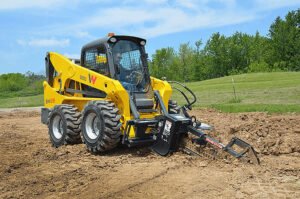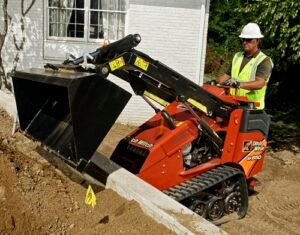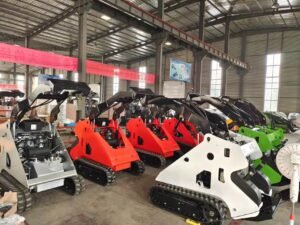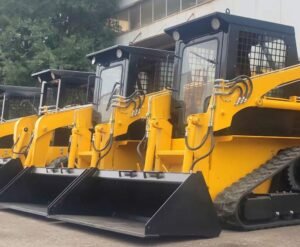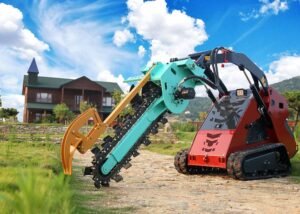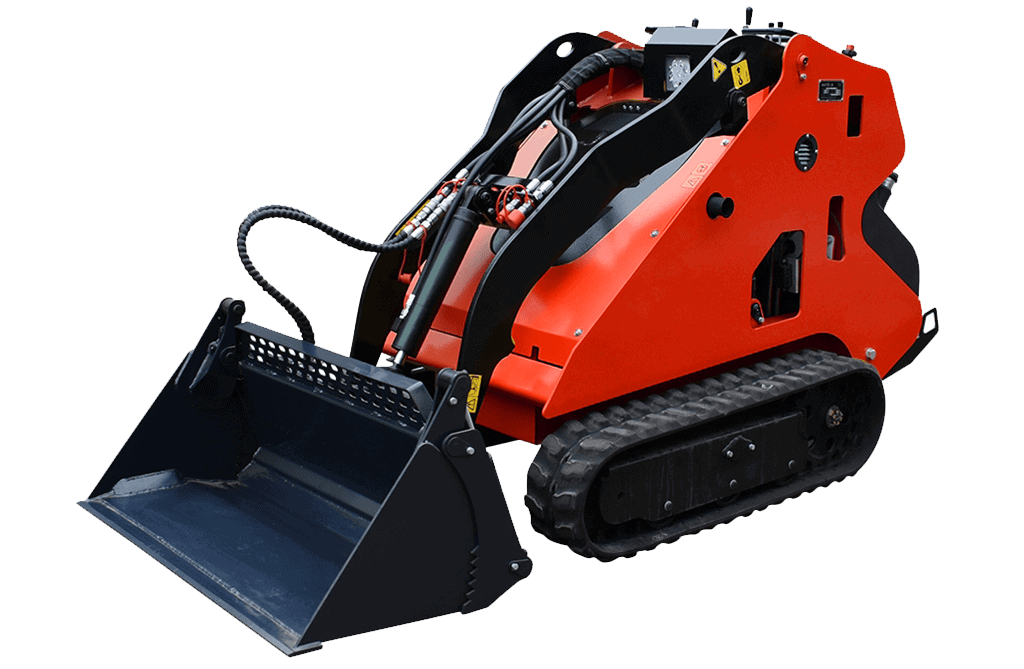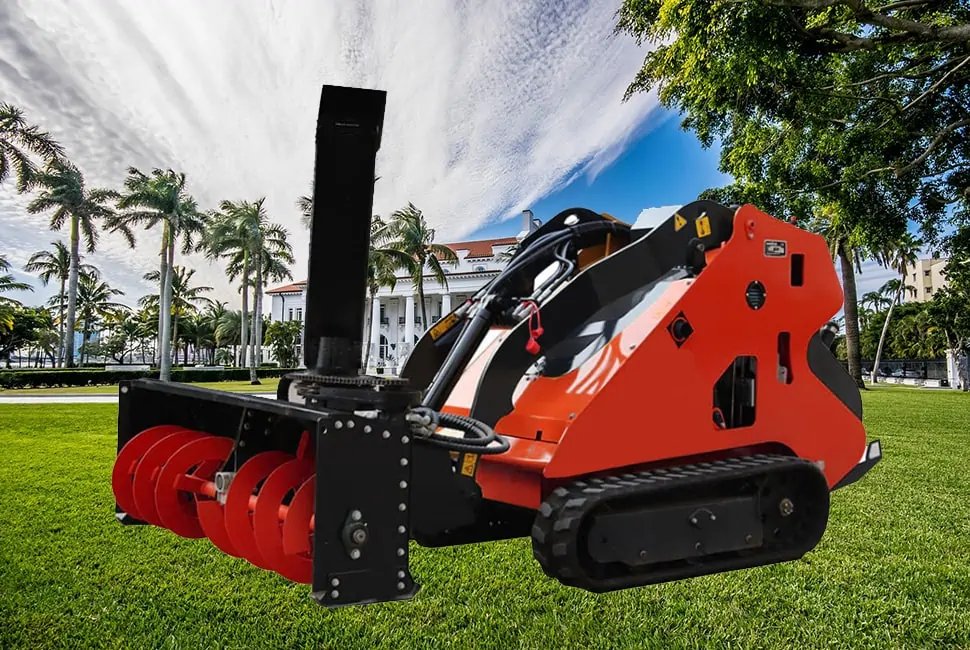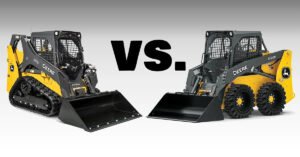
Tracked Vs. Wheeled Skid Steer Loader | Which One To Choose In 2023
Introduction Skid steer loaders are the swiss knife of construction machines. You can perform multiple jobs on the construction site with a skid steer, for instance, material handling, grading, loading, landscaping the garden, creating ridges, etc. A skid steer machine’s higher versatility has helped it make a name in the construction industry. But there are also so many types of skid steer equipment that you can use on-site. First of all, people mostly think about the size and attachments of skid steer equipment. But it is not the only thing that you should focus on. You need to consider the two most common types of skid steer equipment. And these two types are tracked skid steer loaders and wheeled skid steer loaders. This decision depends upon the terrain and surface you will be working on. Choosing the wrong type of skid steer equipment for the construction site can result in expensive maintenance costs. Therefore, this article provides guidance on all the basics of these two skid steer types. So let’s dig into these most common types. Wheeled Skid Steer Loaders Wheeled skid steer equipment is compact machines designed primarily for landscaping and digging jobs. It consists of two parts that can connect to many attachments: buckets, pallet forks, snowblowers, etc. Wheeled skid steer loader consists of 4 wheels. Wheeled skid loaders consist of wheels in their undercarriage. At first wheeled skid steer loaders were invented until tracked skid steer equipment was designed to overcome some limitations. Wheeled skid loaders are used in construction sites where surfaces are reasonably even and dry. When surface soil is leveled, the wheel skid steer equipment works more efficiently as these surfaces do not require much grip. Let’s explore some amazing advantages of wheeled skid steer equipment. Advantages Wheeled skid steer equipment is very useful in construction sites and can perform many site-related jobs. Some of the advantages of skid steer equipment are given below. Disadvantages Although a wheeled skid steer loader can do many jobs on-site, it also has some disadvantages. Some of the disadvantages of your wheeled skid steer loader are given below. Cost Of Maintenance Of Tires/ Wheels Tires for skid steer loaders are cheaper than tracks. Basic, air-filled tires can cost about 100 dollars each, while heavy-duty tires range between 150 to 200 dollars depending upon different versions. Solid rubber tires cost about 800 dollars or more. A set of tires for a skid steer loader can last 600 hours to 1000, depending on site conditions. Maintenance of tires is essential for extending their life. Care of your wheels includes regular inspection for cracks, proper inflation, and removal of excess counterweights to reduce stress on tires. Replacing worn-out tires is not challenging. Good equipment will do it for you. Tracked Skid Steer Loaders Tracked skid steer loader is also called a compact track loader. It consists of two parallel tracks instead of wheels. This machine has the same size as the wheeled skid steer loader and performs almost identical operations. Their heavy weight and traction make them quickly move on uneven terrain or slippery ground. When tackling rugged terrains, tracked skid steer loaders are the top champions. These are stable in difficult and muddy areas, unlike their wheeled counterparts, as their weight is distributed over a large area. Knowing the advantages and disadvantages of a tracked skid steer loader can help us understand it better. So let’s get straight into it. Advantages Disadvantages Cost Of Maintenance Of Tracks New tracks are almost 30% more expensive than tires, but tires are optional to be replaced as often as tires. There are two types of ways mentioned below. Most people ask how much time tracks can last. To answer this question, rubber tracks can last from 1200 to 1600 hours, depending on construction site conditions. Steel tracks are more durable and can last much longer, approximately two and a half times that of rubber tracks. After every ten construction site hours, inspect your tires and clean your tracks. On hard surfaces, treads can wear and tear. To reduce this, use a small amount of dirt or sand for your tracked skid steer loader to slide over. Let’s make a comparison of rubber tracks and steel tracks to make everything more clear. Rubber Tracks Vs. Steel Tracks Whether using a mini excavator or a skid steer loader, deciding between two tracks can be challenging. But knowing the differences between them can make everything easier. First, you must know that track machines distribute their weight better than other equipment. Rubber Tracks Rubber tracks are mostly used with skid steer loaders when there are noise restrictions on your construction site. Rubber tracks consist of excellent sound dampening. These tracks are considered ideal for use in residential areas. With the help of rubber tracks, there are fewer chances of damage to soft ground, grass, and other materials. Moreover, you get excellent traction on flat surfaces like concrete and asphalt. Rubber tracks are the best choice if you want faster operations and smoother handling. Finally, there are most cost savings when purchasing a rubber-tracked skid steer than steel tracks. Now let’s explore steel tracks for your skid steer loader. Steel Tracks First of all, you must know that steel tracks have excellent tread life and durability. These tracks are considered best for demolition sites or off-road terrains. Rubber tracks are the right choice if you want something that releases mud and dirt easily. Steel tracks are known for providing an excellent grip in slippery or wet conditions. Can You Put Tracks on a Wheeled Skid Steer? Yes. This is also possible when you are looking for a cost-effective solution. You can add over-the-tire skid steer tracks to your wheeled skid steer loader. The best part to know is that this action will make your skid steer ideal for smooth and rugged surfaces. How Long Do Skid Steer Tracks Last? First of all, you must accept the fact that the lifespan of your equipment depends on various factors.

